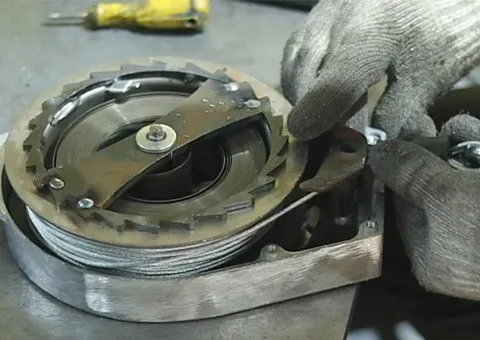Versatile Telescopic Gantry Crane for Efficient Heavy Load Handling and Construction Tasks
Telescopic Gantry Cranes Revolutionizing Material Handling
In the field of material handling and construction, cranes play an indispensable role. Among the various types of cranes, telescopic gantry cranes have emerged as a revolutionary solution for lifting and moving heavy loads over considerable distances. With their unique design and capabilities, these cranes are extensively utilized across industries such as shipping, manufacturing, construction, and more.
What is a Telescopic Gantry Crane?
A telescopic gantry crane is a type of crane that consists of a frame with adjustable legs and a hoisting mechanism mounted on a beam. The telescopic aspect refers to the ability of the crane’s arm to extend and retract, allowing for a greater range of motion and versatility. This feature makes it ideal for applications where lifting and transporting materials of varying sizes and weights is necessary.
One of the key advantages of telescopic gantry cranes is their portability. Unlike traditional fixed cranes, these cranes can be moved from site to site, making them excellent for temporary projects or locations with limited space. They can easily adapt to different working environments, whether it’s an outdoor construction site or an indoor manufacturing plant.
Advantages of Telescopic Gantry Cranes
1. Versatility Telescopic gantry cranes can handle various types of loads, including large containers, machinery, and raw materials. Their adjustable height and reach make them suitable for a wide range of applications, from loading docks to industrial warehouses.
2. Space-Efficient Design These cranes are designed to operate in confined spaces where traditional cranes might not fit. Their ability to be set up quickly and moved around allows for optimal use of available space.
3. Ease of Operation Equipped with sophisticated control systems, telescopic gantry cranes can be operated with minimal training. Operators can efficiently maneuver the crane to lift, lower, and transport loads, improving productivity on the job site.
telescopic gantry crane

4. Safety Features Modern telescopic gantry cranes incorporate various safety features, such as overload protection, emergency stop functions, and automatic locking systems. These enhancements ensure safe operation for both the equipment and the personnel involved.
5. Cost-Effective The purchase and maintenance costs of telescopic gantry cranes can be more economical compared to traditional cranes. Their adaptability means fewer specialized cranes are needed for diverse tasks, leading to overall cost savings.
Applications
The versatility of telescopic gantry cranes makes them suitable for diverse applications. In the construction industry, they are often used for assembling prefabricated structures, handling heavy materials like steel beams, and lifting roofing sections. In shipyards, they facilitate the loading and unloading of large containers, streamlining cargo operations.
In manufacturing environments, telescopic gantry cranes assist in moving heavy machinery, managing assembly lines, and performing warehouse operations. Their ability to extend and retract allows them to navigate complex layouts with ease.
Conclusion
Telescopic gantry cranes represent a significant advancement in material handling technology. Their combination of versatility, portability, and safety features makes them an excellent choice for a wide range of industrial applications. As businesses seek to improve efficiency and safety at worksites, the demand for such innovative lifting solutions is likely to grow. By continuing to evolve and adapt, telescopic gantry cranes are set to play an increasingly crucial role in the future of construction and material handling operations.
As industries continue to embrace automation and improve operational efficiency, the importance of cranes, particularly telescopic gantry cranes, cannot be overstated. Their design not only addresses current needs but also anticipates future challenges in material handling, paving the way for safer and more efficient workplaces.
-
Unlock Seamless Relocation with Our Heavy Equipment Moving ExpertiseNewsJun.06,2025
-
Unleash Unrivaled Flexibility with Our Adjustable Gantry CraneNewsJun.06,2025
-
Unleash Heavy-Duty Efficiency with Our Industrial Gantry Crane SolutionsNewsJun.06,2025
-
Revolutionize Steel Handling with Our Magnetic Lifter RangeNewsJun.06,2025
-
Master Equipment Mobility with Premium Machinery Mover SolutionsNewsJun.06,2025
-
Elevate Your Material Handling with Magnetic Lifter TechnologyNewsJun.06,2025
-
YS Permanent Lifting Magnets: The Smarter Way to Handle SteelNewsMay.22,2025
